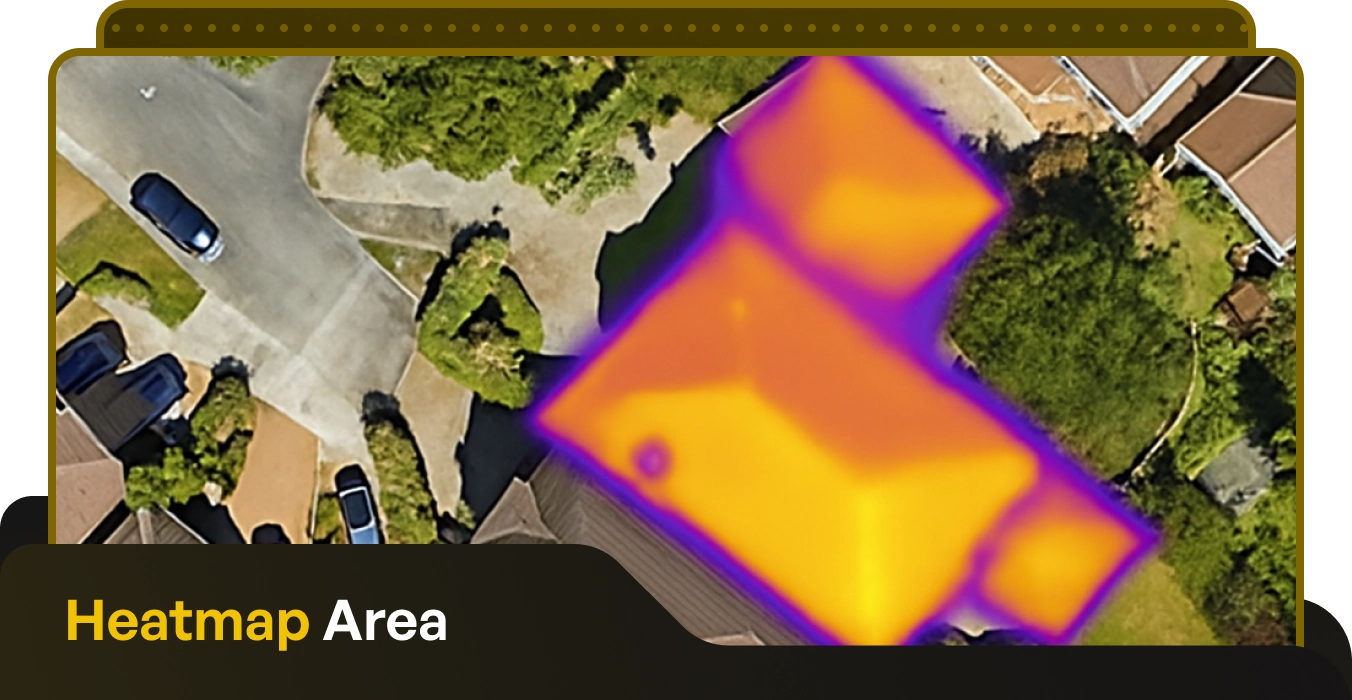Table of Contents
What Size Solar Inverter Do I Need?

Written by: Briain Kelly
Published: July 28, 2025
Last updated: November 19, 2025
Reading time: 3 mins
The inverter sits at the heart of any solar PV system, taking in the power generated by your solar panels and distributing it for use in your home.
Without the right inverter, your solar panels will at best be working at reduced efficiency, if not outright useless.
That is why it is essential to ensure that you have the right-sized solar inverter for your home’s solar panels and its electricity demands.
What does a solar inverter do?
The main purpose of a solar inverter is to convert the Direct Current generated by solar panels into Alternating Current electricity, which can be used in your home.
In this way, it acts as the central hub of your solar system, ensuring that you have the right power and that solar panels aren’t dumping too much energy into your home grid.
An inverter also tends to act as a monitoring system and control hub for your solar PV system, allowing you to see the output of the system and set controls for elements such as a solar battery.
How to know what size inverter you need?
There are two aspects to calculating the size of the inverter you need. Firstly, it must be able to handle the power being generated by the solar panels. It must also be able to output enough power to supply all of the appliances in your home.
Solar Power Input Requirements
Ther three characteristics of a solar inverter which are important for how it handles power from your solar panels.
- Maximum Power Point Tracking: Monitors and alters the voltage and current of your solar panels to match the load demand for greatest efficiency.
- Maximum Input Voltage: The highest voltage the inverter can handle for short periods of time.
- Rated Voltage: The voltage at which the inverter can operate on a steady basis.
- Start Up Voltage: The minimum voltage the inverter needs from the source to operate.
- Maximum PV Power: The recommended maximum solar system output for this inverter.
Different brands and models of solar inverters can handle varying levels of power input from a solar PV system and also require a certain amount to operate.
On the datasheet for any inverter, one of the first things you will see is the recommended maximum PV power for each model.
This figure, given in kilowatts (kW) or kilowatt peak (kWp) tells you what the maximum solar PV system size that the inverter model can handle.
If you want to install more solar panels than is recommended on the datasheet, you will need to go to a more powerful model of solar inverter.
However, solar PV systems rarely operate at their maximum peak output in real-world conditions. So it can be safe to get an inverter which is slightly below the maximum PV power of your system.
Keep in mind, however, that inverters are at their most efficient when at or close to their maximum capacity. Undersizing your system could result in power loss from reduced efficiency.
Alongside the Max PV input, an inverter will also have maximum and minimum input voltage. Exceeding the maximum input voltage regularly can shorten the lifespan of your inverter.
On the other end of the scale, your solar panel system must have an output voltage at least as great as the minimum input or Start-up voltage requirements of the inverter for it to work.
Meeting Your Home Power Demand
To calculate the power needs that your inverter must deliver for your home, you simply add up the power requirements of all the appliances that might run at the same time.
For instance, powering a fridge (550 Watts), five LED lights (50 Watts x 5), and an electric heater (1000 Watts) has a combined power draw of 1,700 Watts.
However, there are two aspects to calculating the power load your inverter must support: the regular power demand and the surge power demand.
Many appliances draw significantly more power for a short period while they are starting up.
So, when sizing your inverter in the above example, you must ensure that it can meet that surge demand, which will be higher than the standard power usage.
Other Factors in Choosing an Inverter Size
While what we have listed above are the fundamentals for getting the right-sized solar inverter, there are other technical and real-world factors that should be considered.
System Efficiency: With the conversion of power between your solar panels and home, their will be some lost as no inverter works at perfect efficiency. Know the efficiency of your inverter and how it will affect the power delivered.
Adding More Solar Panels: If your home has roof space, you may well choose to add more solar panels at some future date. If this is the case, then you should keep that in mind when buying an inverter so that you won’t have to replace it with a more powerful model.
Power Loss: If you have an older home, there are many ways in which power could be lost along the way, such as loose connections or increased resistance on old wiring.
What’s the best way to get the right inverter?
In most cases, choosing the right-sized inverter for your needs will be handled by the solar installer. Solar PV systems are best installed as a whole, allowing for a solution designed to your needs.
Discuss everything mentioned above with your solar installer, and they will help with this decision.
What Size Solar Inverter Do I Need?
Published: July 28, 2025
Last updated: November 19, 2025

Written by: Briain Kelly
Reading time: 3mins
The inverter sits at the heart of any solar PV system, taking in the power generated by your solar panels and distributing it for use in your home.
Without the right inverter, your solar panels will at best be working at reduced efficiency, if not outright useless.
That is why it is essential to ensure that you have the right-sized solar inverter for your home’s solar panels and its electricity demands.
What does a solar inverter do?
The main purpose of a solar inverter is to convert the Direct Current generated by solar panels into Alternating Current electricity, which can be used in your home.
In this way, it acts as the central hub of your solar system, ensuring that you have the right power and that solar panels aren’t dumping too much energy into your home grid.
An inverter also tends to act as a monitoring system and control hub for your solar PV system, allowing you to see the output of the system and set controls for elements such as a solar battery.
How to know what size inverter you need?
There are two aspects to calculating the size of the inverter you need. Firstly, it must be able to handle the power being generated by the solar panels. It must also be able to output enough power to supply all of the appliances in your home.
Solar Power Input Requirements
Ther three characteristics of a solar inverter which are important for how it handles power from your solar panels.
- Maximum Power Point Tracking: Monitors and alters the voltage and current of your solar panels to match the load demand for greatest efficiency.
- Maximum Input Voltage: The highest voltage the inverter can handle for short periods of time.
- Rated Voltage: The voltage at which the inverter can operate on a steady basis.
- Start Up Voltage: The minimum voltage the inverter needs from the source to operate.
- Maximum PV Power: The recommended maximum solar system output for this inverter.
Different brands and models of solar inverters can handle varying levels of power input from a solar PV system and also require a certain amount to operate.
On the datasheet for any inverter, one of the first things you will see is the recommended maximum PV power for each model.
This figure, given in kilowatts (kW) or kilowatt peak (kWp) tells you what the maximum solar PV system size that the inverter model can handle.
If you want to install more solar panels than is recommended on the datasheet, you will need to go to a more powerful model of solar inverter.
However, solar PV systems rarely operate at their maximum peak output in real-world conditions. So it can be safe to get an inverter which is slightly below the maximum PV power of your system.
Keep in mind, however, that inverters are at their most efficient when at or close to their maximum capacity. Undersizing your system could result in power loss from reduced efficiency.
Alongside the Max PV input, an inverter will also have maximum and minimum input voltage. Exceeding the maximum input voltage regularly can shorten the lifespan of your inverter.
On the other end of the scale, your solar panel system must have an output voltage at least as great as the minimum input or Start-up voltage requirements of the inverter for it to work.
Meeting Your Home Power Demand
To calculate the power needs that your inverter must deliver for your home, you simply add up the power requirements of all the appliances that might run at the same time.
For instance, powering a fridge (550 Watts), five LED lights (50 Watts x 5), and an electric heater (1000 Watts) has a combined power draw of 1,700 Watts.
However, there are two aspects to calculating the power load your inverter must support: the regular power demand and the surge power demand.
Many appliances draw significantly more power for a short period while they are starting up.
So, when sizing your inverter in the above example, you must ensure that it can meet that surge demand, which will be higher than the standard power usage.
Other Factors in Choosing an Inverter Size
While what we have listed above are the fundamentals for getting the right-sized solar inverter, there are other technical and real-world factors that should be considered.
System Efficiency: With the conversion of power between your solar panels and home, their will be some lost as no inverter works at perfect efficiency. Know the efficiency of your inverter and how it will affect the power delivered.
Adding More Solar Panels: If your home has roof space, you may well choose to add more solar panels at some future date. If this is the case, then you should keep that in mind when buying an inverter so that you won’t have to replace it with a more powerful model.
Power Loss: If you have an older home, there are many ways in which power could be lost along the way, such as loose connections or increased resistance on old wiring.
What’s the best way to get the right inverter?
In most cases, choosing the right-sized inverter for your needs will be handled by the solar installer. Solar PV systems are best installed as a whole, allowing for a solution designed to your needs.
Discuss everything mentioned above with your solar installer, and they will help with this decision.
Solar Energy Saves Households Thousands in Electricity Costs
Take our 2-minute questionnaire and find affordable solar options to suit your budget and lifestyle.



